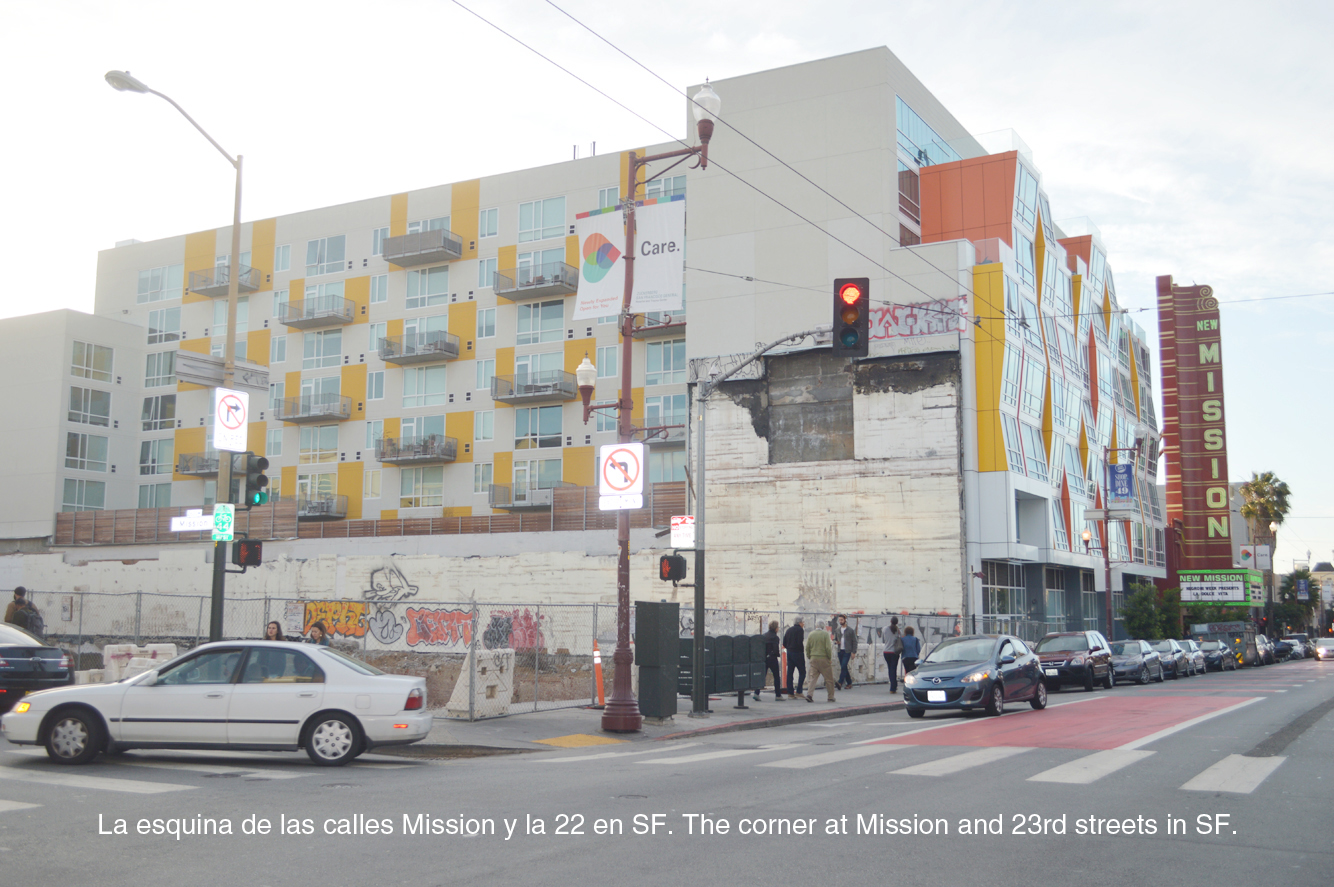by Josh Wolf
After catching fire three times and being razed to the ground, the lot at 22nd and Mission Street holds two possible futures that evoke the two competing trajectories for the future of the Mission.
MEDA, a non-profit community developer, has made multiple offers to buy the property to build affordable housing, but the owner has not responded, said MEDA Policy Manager Gabriel Medina.
If the property isn’t obtained by a non-profit developer, then any future plans will inevitably include a bevy of luxury housing that’s inaccessible to the working class people who inhabit the Mission.
On Jan. 28, 2015, a fire broke out at 2598 Mission Street that left one man dead, 58 others homeless, and displaced numerous businesses. Although that fire was ruled accidental after investigators determined that it started inside a wall on the third floor, the owner did not rehabilitate the building afterwards and instead allowed its condition to deteriorate. A little more than one year after the first inferno, the building ignited again and caught fire a third time one month later.
Given the extensive damage, the city approved the owner’s request to demolish the building and construction crews have been working to clear the lot over the past few months.
Under the city’s code, residents who are displaced by a fire have a right to return to their home after it is repaired at the rental rate they were paying before the fire. That right-to-return still exists even now that the building has been destroyed, said Medina, but the owner has an incentive to move slowly in rebuilding the site.
There’s a “strategy not to restore buildings as fast as they could, hoping the tenants relocated and give up their right of return,” said Medina.
While many of the people displaced by the fire may still be in the city, the “Good Samaritan Tenancy” program that affords them reduced rent will expire early next year, and they will not yet be able to return home when it does. The longer the owner waits to rebuild, the fewer the number of people who will still be around to take advantage of that protection. Medina said the new owner would likely build as many market-rate units as possible to maximize profits, and that every tenant who doesn’t return equates to one more apartment at luxury rates.
There are already about 2,000 units currently in the pipeline to be developed in the Mission, and most of them are expected to be luxury units. Historically the Planning Commission has been approving these proposals despite community objections, but recently the Commission has grown more responsive to concerns that the developments aren’t serving the needs of the community.
On June 2nd, the Planning Commission voted to approve a plan known as the “Beast on Bryant” to demolish the building that once housed Cell Space, a legendary arts collective that thrived in San Francisco’s Mission District for nearly 20 years, and to build two new apartment buildings in its place. One of the buildings would hold 196 apartments that only the rich can afford; the other building would include 139 affordable unites that would be priced for those making less than 60 percent of the average Bay Area income, or about $43,000 for a single adult.
It wasn’t surprising that the Planning Commission approved developer Nick Podell’s plan to build luxury housing in the Mission. Podell was scheduled to go before the Commission in September with a previous incarnation that involved building only one building instead of two. But he pulled his application at the last minute in the face of community protest. The revised version create significantly more affordable housing by separating the project into two buildings and also offered to restore a small percent of the arts space lost by the destruction of the old building.
During the interim period, the community met to develop its own proposal for the site, and this reporter was one of the people who participated in the months-long process of creating a plan for what was coined the “Beauty on Bryant.” The proposal includes a number of detailed suggestions, but the main points include calling on Podell to donate half the total land to the city to build affordable housing, preserving the 50,000 square-feet of space on the ground floor for arts and industrial uses that existed on the original site, and relying on 100-percent union labor to construct the new project.
That call for union labor created a schism that intensified after the Carpenters In Action (CIA) reached an agreement with Podell and began rallying for the project while other unions tried to secure their own assurances. Those assurances never came and at Thursday’s meeting members of organized labor spoke out against the project, while nearly 50 members of CIA spent the day at the Planning Commission and managed to secure most of the seats in the room.
“It’s shocking to see that the trade unions are not supporting this project,” said Commissioner Kathrin Moore. “I’ve never heard the unions stand here and say what they said today and that leaves me concerned.”
Although that crack in Podell’s plan wasn’t severe enough for his whole proposal to collapse. It did help the community secure additional space for arts and industrial uses in the ground floor of his market-rate building. While the concession is far from a complete victory, the planning commission seemed more committed to protecting affordable housing and arts space in the city than at previous meetings.



